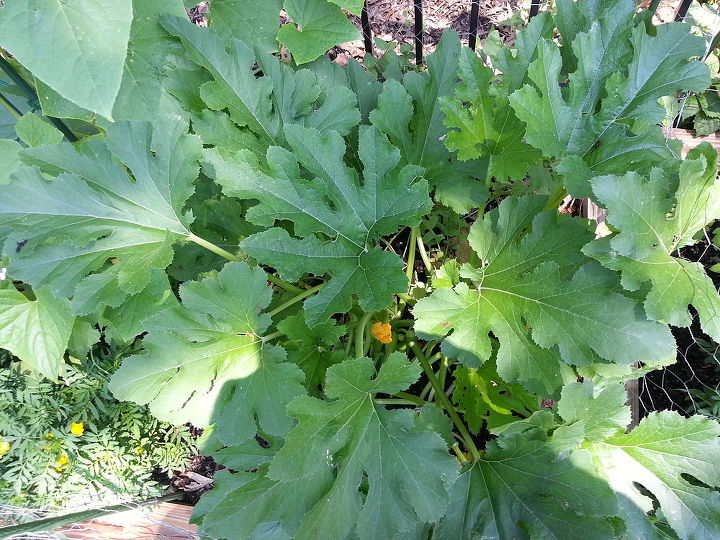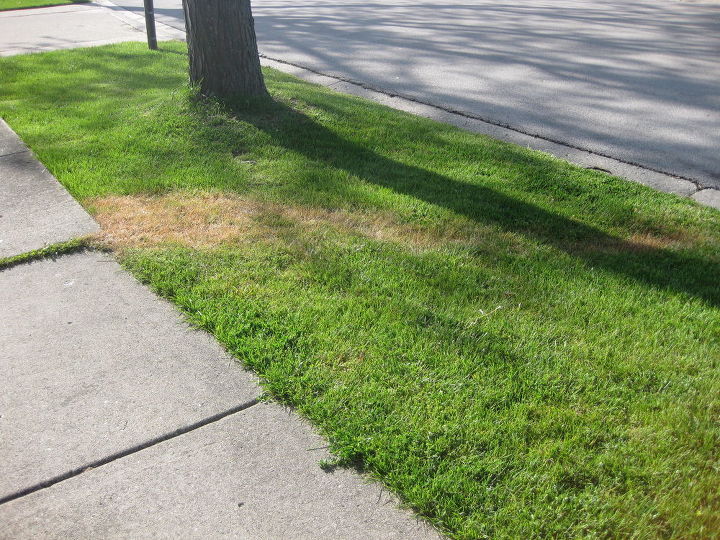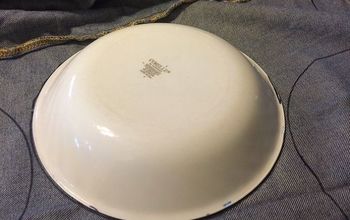How to safely repot Christmas Cactus?
Is there a trick to repotting a plant without breaking it?
I started my Christmas Cactus from cuttings 8 years ago and haven't repotted it since. I like the size and shape of the pot it's in but assume it needs fresh soil. It has never bloomed. In March I had 2 blossoms start growing but both fell off before opening. Cuttings came from my mother's plant that was previously Grandma's, both are deceased, so I don't want to loose it from mishandling.
Related Discussions
GNATS - How to get rid of them?
Somehow my house and garden got tiny gnats that killed my fuchsia plant and fly everywhere. I have tried ALL the Web recommendations - soap and oil dishes, sand in th... See more
Marigolds growing! Should I pinch the buds?
My marigold plants are growing. I heard that pinching the buds until Autumn will allow them to grow without killing the plant. Is this true?
Growing garlic
Growing our first garlic, should we wait until the leaves are drying out before we pick it? Husband picked first one today along with our first potatoes.
How to keep mice out of your garden?
Hi everyone, I have mice in my garden destroying my vegetables and I have also noticed them in the barn and shed. Please can someone tell me how to prevent them from ... See more
What's the best flower/plant to grow in Texas?
I know that opinions vary, but what's your opinion?!I have great luck w Rosemary plants. Green all year long.
Squash Plants Large and Healthy and no Squash Growing?
2nd Season in a ROW! Squash plants growing large and healthy leaves and the stems near the roots are looking healthy and turning dark green, getting flowers that grow... See more
Trail of dead grass mystery?
Trail of dead grass appeared two weeks ago that starts in neighbor's yard and goes to the sidewalk, then continues past the sidewalk in a line into the grass into my ... See more





they do best when root bound and left alone,don't tolerate being moved even if you just turn them around (especially when in bloom),they need very bright light,keep dry (really dry) between waterings give it some water soluble miracle grow fertilizer 2x a year as one of the regular waterings,no drafts HERE IS ADDITIONAL INFO..........
Christmas Cactus – Getting Them to Bloom
What one thinks of as Christmas Cactus is more likely to be Thanksgiving Cactus since it mostly is what is sold around the holidays. Plants that bloom around Thanksgiving are the species Schlumbergera truncata. True Christmas Cactus blooms later into December and comes from the species Schlumbergera x buckleyi, a hybrid produced in the late 1840s in England.
In addition to bloom time, one can distinguish between the two by examining their stem segments or "leaves". Thanksgiving Cactus segments have sides with pointed lobes along the edges while Christmas Cactus segments are smooth sided and have no pointy edges.
Bloom form is another indicator of species difference. True Christmas Cactus blooms have purplish anthers, the pollen bearing part of the flowers, whereas the Thanksgiving Cactus has yellow anthers. Don't be confused by the purple tipped stigma present is both. This taller single stigma is where incoming pollen gets deposited for fertilization. For the remainder of this article, "Christmas Cactus" will refer to both species.
Bloom colors include white, pinky-white, fuchsia with a white throat, fuchsia with a fuchsia throat, red, orangey-red, apricot and yellow. Oddly, white blooming plants will bloom pinkish-white if kept at lower temperatures. For years it was my goal to collect one of each color. I finally succeeded when I obtained a yellow-blooming plant a few years ago. A recent catalogue showed fringed blooming species available for the first time. Christmas Cactus species are long lived and will bloom year after year. Many are even passed down through generations. I have a true Christmas Cactus that blooms a solid fuchsia color and is well over twenty-five years old.
These plants flower in response to shorter daylight hours. Flowering also is related to nighttime temperatures. Ideal temperature range for flower bud development is between 55 and 60 degrees for a period of six weeks. As long as the temperatures remain in this range, plants will develop buds regardless of daylight hours. To achieve short-daylight induced blooming, place plants in a room that does not have any artificial light source such as lamps. The plants should receive no more than 8-11 hours of light. Plants also can be forced into reblooming each year by using timers to control a shorter light exposure.
During flower bud formation, stop fertilizing and only water enough to keep the leaves from becoming shriveled. Sometimes my plants reward me with a few more blooms again in March or April. My personal observation is that keeping them on the dry side after flowering is a sort of rest period that, when followed by fertilization, invigorates them into blooming again. If one wishes to force blooms any other time of the year, all that is required is to keep the plants cooler and in the dark for 13-16 hours for about four weeks.
One of the most frustrating things that can happen is to have flower buds drop off the plant before they bloom. Several different conditions, usually over-watering, insufficient light, or relocating the plant during early bud development can cause bud drop. Years ago I discovered that moving a plant led to the buds "turning" toward the light source and then falling off! Now I leave them alone until the buds are well developed and nearly in bloom before I relocate for viewing enjoyment. I should warn you that any newly purchased plant in bud will most likely drop some buds at home due to the abrupt light source change. Drafts and temperature extremes also can cause buds to drop.
https://www.bing.com/videos/search?q=How+to+safely+repot+Christmas+Cactus%3f&qpvt=How+to+safely+repot+Christmas+Cactus%3f&FORM=VDRE
Lynn and Betty,
Thank you both for your quick replies. I've already learned a lot and haven't finished ready all of the great information you've provided!
Both times I found a blossom last month, I turned the pot with the thought that it would protect the blossom bud from being bumped as I walk by... when I should have moved my chair away instead.
I'll keep reading to learn more about fertilizing my plant.
Thank you!
Christmas catus blooms for me twice each year,due to either a change in lighting or temperature. Mine is next to a patio door and gets blasted with cold air in the winter when I let my dog outside.
Your pot should be at least one to 2 inches larger all around the plant to make room for growth. If the plant is really large, an extra pair of hands would help. Lay the pot on its side and gently tug until the whole plant comes loose. Do this when the plant is dry. Put some fresh soil in the pot bottom and then put your plant back. Gently fill in some fresh soil around the plant coming up to the area where the stems come out of the soil at the top. Use a good quality potting soil.
To get it to bloom, only water in the off season when it is required. They like decent light but not direct hot sun. When you see blooms forming increase the watering a little to help the plant. You can also add a bit of Schultz liquid fertilizer when you water and when blooming. Never overwater as you could rot the plant. If there is drainage then water from the top, let drain and then empty the saucer. I have found that overwatering can promote a lot of growth but deters blooming. Hope this helps.